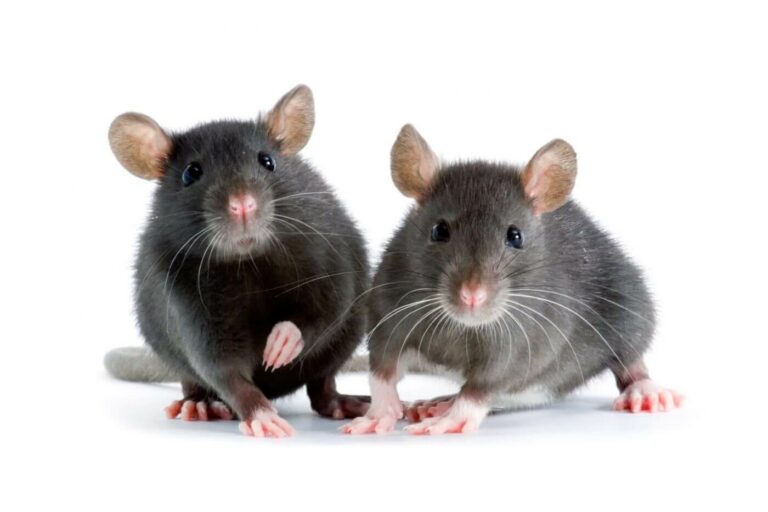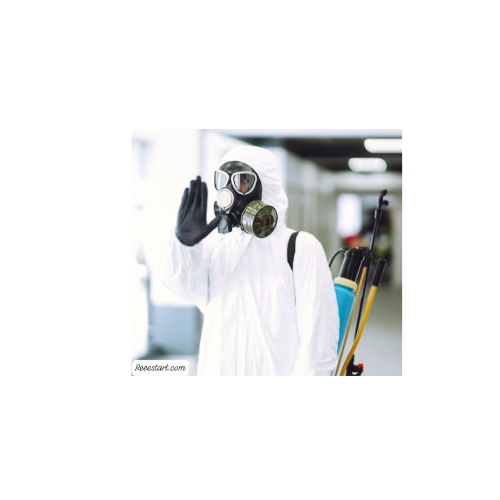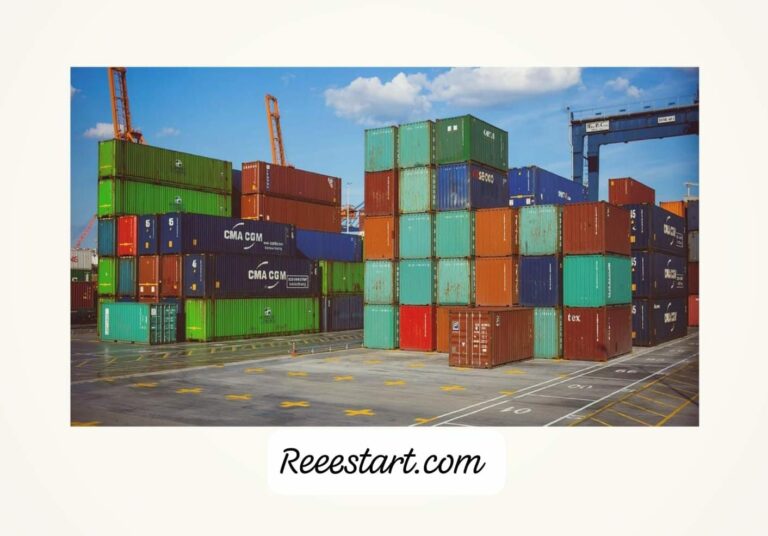Fumigation for Global Trade plays a crucial role in global trade by preventing the spread of pests and diseases across borders, Fumigation is a widely used technique for pest control to eliminate harmful pests from commodities and ensure that they are safe for consumption and transport. It involves the introduction of a fumigant gas into an enclosed space, where the pests are exposed to a lethal dose of the gas. However, effective fumigation requires careful planning, precise execution, and rigorous monitoring to achieve the desired pest control outcomes while minimizing risks to human health and safety.
Fumigation for Global Trade 2025
Fumigation is primarily used to target pests that are difficult to control through traditional methods like chemical pesticides or physical barriers. The process involves introducing a fumigant—a gaseous substance toxic to pests—into a sealed environment, such as a container, warehouse, or shipment. The fumigant permeates the space, penetrating the commodity to reach pests hiding in crevices, packaging, or within the commodity itself.
Common fumigants include methyl bromide, phosphine, and sulfuryl fluoride. Each fumigant has unique properties, and the selection of the right one depends on various factors, including the type of pest, the nature of the commodity, and regulatory guidelines.

Factors Affecting Fumigation Efficacy
Several factors influence the success of fumigation, and understanding these elements is critical to achieving the required efficacy:
- Fumigant Concentration, The concentration of fumigant in the enclosed area must be sufficient to kill the target pests. Too low a concentration may be ineffective, while too high a concentration could pose risks to the safety of personnel or cause damage to the commodity.
- Exposure Time, Pest mortality is also determined by the duration of exposure to the fumigant. Longer exposure may be needed for certain pests or under certain environmental conditions.
- Temperature affects the respiration rate of pests and the efficiency of fumigation. In general, higher temperatures accelerate pest respiration and improve fumigant efficacy. Similarly, humidity levels influence fumigant absorption by the commodity and packaging.
- Sorption refers to the process by which the fumigant is absorbed by the commodity, packaging, or the enclosure itself. While sorption can reduce fumigant availability, it is sometimes necessary to penetrate certain commodities, such as fruit, to target internal pests.
- Enclosure Gas Tightness, The fumigation space must be tightly sealed to maintain the desired fumigant concentration. Leaks can result in the loss of fumigant, rendering the treatment ineffective.
Why is Fumigation Important in Global Trade?
Fumigation for Global Trade is important because of the following:
- Prevents the spread of invasive species, Pests can cause significant damage to agriculture and ecosystems in importing countries. Fumigation helps prevent the introduction of these harmful species.
- Protects cargo quality, Infestations can damage or contaminate goods, leading to losses for traders. Fumigation ensures that products arrive in good condition.
- Meets international regulations, Many countries have strict import regulations that require fumigation for certain types of cargo, especially those containing wood or agricultural products. Compliance with these regulations is essential for smooth customs clearance.
Fumigation Equipment and Instrumentation
To ensure that fumigation achieves the desired efficacy, various instruments are required to monitor and control the process. Some of the most essential equipment includes:
- Instruments to Measu High environmental humidity can affect fumigant performance. Using instruments to measure and monitor humidity levels ensures that optimal conditions for fumigation are maintained.
- Instruments to Measure Reduced Pressure, In vacuum fumigation, a suitable vacuum gauge is required to measure and record the air pressure or vacuum within the enclosure. This ensures that the fumigation is conducted under the proper conditions.
- Temperature sensors, calibrated thermometers, and recording devices are used to monitor the temperature within the enclosure, the commodity, and external surfaces. Temperature plays a critical role in determining fumigation efficacy.
- Gas concentration sensors or sampling lines are used to measure fumigant concentration inside the enclosure. These devices must provide accurate readings to verify that the required fumigant levels are maintained throughout the exposure period.
- Fumigation procedures must be carefully planned and executed to ensure successful pest control and safety. Key steps in the fumigation process include:
Commodity Loading
Before fumigation, commodities must be loaded into the enclosure in a way that allows for proper fumigant circulation. Adequate space should be provided for air and fumigant to move freely. In cases of bulk loading, a recirculation system may be used to enhance gas distribution. Properly spaced separators may be used for dense commodities to facilitate fumigant penetration.
Packaging Considerations
Packaging must allow for fumigant penetration. If the packaging is impermeable to the fumigant, it must be punctured or removed to ensure that the fumigant reaches the commodity inside. Perforated packaging should not be overlapped, as this could obstruct the fumigant flow.

Sorption Effects
Sorption occurs when fumigants bind to the commodity or packaging, reducing the amount of fumigant available to kill pests. While sorption is undesirable in some cases, it can be beneficial when targeting internal pests like fruit flies. The fumigation duration may need to be extended to compensate for the sorption effects.
Temperature Control
Maintaining the correct temperature during fumigation is essential for achieving optimal pest control. Monitoring the temperature of the enclosure and the commodity is necessary to ensure that the fumigant is effective. Temperature should be recorded at various intervals during the fumigation process.
Gas Tightness Testing
Before fumigation, it is important to ensure that the enclosure is sealed properly. A gas-tightness test should be conducted to check for leaks. If the enclosure is not sufficiently gas-tight, fumigation may not be effective. Periodic gas-tightness assessments are recommended for facilities that conduct fumigation regularly.
Fumigant Introduction
The fumigant should be introduced into the enclosure in a controlled manner, ensuring that the correct dose is applied. Accurate measurement of the enclosure volume and fumigant quantity is essential. The fumigant should be distributed evenly, and the enclosure should be sealed to prevent leaks during the exposure period.
Monitoring and Recording
Regular measurements of fumigant concentration, temperature, and other parameters should be taken to verify that the fumigation is proceeding according to the treatment schedule. Record-keeping should be accurate and thorough to ensure that the fumigation process is documented for audit and verification purposes.
Post-Fumigation Procedures
After fumigation, it is crucial to ensure that the treated commodity is handled properly to prevent re-infestation or contamination:
Prevention of Infestation
The consignment owner is responsible for preventing infestation after fumigation. This includes using pest-free storage facilities, packaging the commodity in pest-proof materials, and promptly dispatching the treated commodity.
Labelling
Treated commodities should be clearly labeled with fumigation lot numbers or other identifying features to enable trace-back in case of non-compliance. Labels should be prominently displayed on the packaging to ensure easy identification.
Record Keeping
Accurate records of each fumigation procedure should be maintained for at least one year. These records should include details about the fumigant used, the fumigation schedule, the equipment used, and the results of gas-tightness tests. This documentation ensures trace-back capability and compliance with regulatory standards.
Monitoring and Auditing Fumigation Practices
To ensure that fumigation procedures are consistently followed and that fumigations are effective, regular monitoring and auditing should be conducted. Treatment providers must comply with established monitoring requirements, which may include unannounced audits, record-keeping, and corrective actions in case of non-compliance.
Ensuring Effective Fumigation and Pest Control
Fumigation is a powerful tool for pest control, but its effectiveness depends on meticulous planning, careful execution, and rigorous monitoring. By following proper fumigation procedures, selecting the right fumigants, and maintaining accurate records, fumigation can be a safe and effective way to eliminate pests and ensure the quality of agricultural commodities and other goods.




